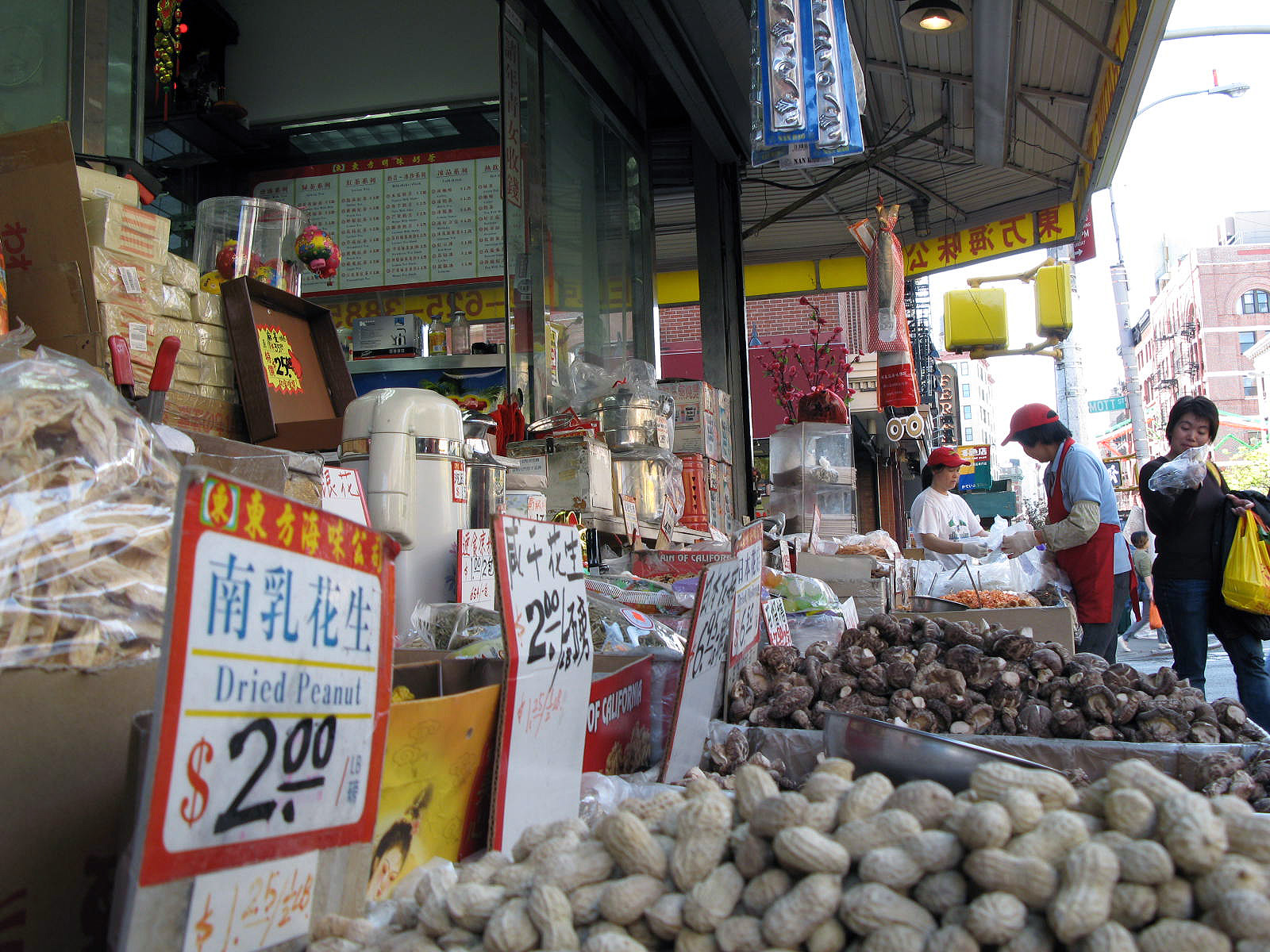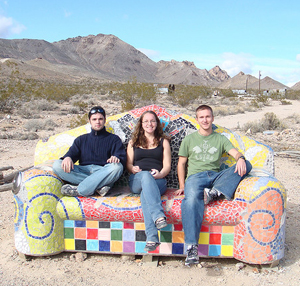The Chinese Manhattan

By Harvey D. Shapiro
It seems like only a few years ago that the Flushing area in the center of the New York City borough of Queens was a quiet residential community populated largely by middle-income Jews who worked in Manhattan. Now some call Flushing “the Chinese Manhattan.” It has been transformed into a bustling center of Chinese life in New York, providing not only homes for perhaps a 100,000 people, but also an array of professional offices and a sea of shops selling Chinese food and other Asian products.
Because changing immigration laws have made it easier for Asians to gain entry to the U.S., New York’s Chinese population is booming. The original Chinatown has spilled over its borders into neighboring communities, and there are now four other heavily Chinese neighborhoods in New York City. One is in East Harlem, originally an Italian neighborhood and then a home to Hispanics. Plus there are now two Chinese areas in Brooklyn. And there is Flushing, rapidly emerging as the new center of Chinese life.
Chinatown has always had a dual role. It is home to thousands of Chinese people, and it is also a tourist mecca, a standard stop for visitors to New York seeking Chinese restaurants, exotic vegetables — and counterfeit versions of designer handbags. As New York City’s Chinese population has grown, it has spilled out of Chinatown into two adjacent neighborhoods: Little Italy and the Lower East Side. The former still has gelato and pizza stands but the people living in the apartments upstairs of the stores are likely to be Chinese. Similarly, in the Lower East Side, the Yiddish language signs have been painted over as the immigrant Jews have departed. Now, the area is increasingly populated by Chinese resident and shopkeepers, particularly those selling supplies and equipment to New York City’s hundreds of Chinese restaurants.
 As the Chinese have been crowded out of Chinatown and have sought other communities, Flushing has emerged as the new focal point for Chinese life in New york. Part of its original appeal was the easy commute to Manhattan. The Number 7 subway line starts in Flushing and goes to Manhattan. Since the Flushing subway stop is at the nexus of Chinese, Indian, and Korean communities, the No. 7 train has been dubbed the Orient Express. Suburban commuter trains run by the Long Island Railroad into Manhattan also stop in Flushing.
As the Chinese have been crowded out of Chinatown and have sought other communities, Flushing has emerged as the new focal point for Chinese life in New york. Part of its original appeal was the easy commute to Manhattan. The Number 7 subway line starts in Flushing and goes to Manhattan. Since the Flushing subway stop is at the nexus of Chinese, Indian, and Korean communities, the No. 7 train has been dubbed the Orient Express. Suburban commuter trains run by the Long Island Railroad into Manhattan also stop in Flushing.
Once some Chinese started moving to Flushing, they began building a community infrastructure. Now, the original modest shops selling Chinese fruits and vegetables are being supplanted by shopping malls with an Asian flavors and fancy new high rise condominium apartments.
Caldor, a big box retailer like Wal-Mart or Target, went out of business and closed its Flushing story a dozen years ago. After sitting vacant for years, the building has reopened as the New World Shopping Center. With 65,000 square feet of space on three floors, New World features an Asian supermarket, a large dim sum restaurant, and a banquet hall with a seating capacity of 1500 – ideal for a major Chinese weddings. It’s also got a food court with 32 vendors offering not only Chinese food, but also food of Malaysia, Thailand, Vietnam, Korea, and Japan –plus hamburgers and french fries.
But New World is already dwarfed by the Shops at Sky View Center, a newly built mall featuring a variety of Asian foods and specialty items, as well as outposts of major U.S. chain stores.
Meanwhile, new housing is shooting up. Much of Flushing was characterized by low rise brick apartment buildings, often dating from the 1920s. But now there are a number of new high rise condominiums. The development of the SkyView shopping center was accompanied by construction of Sky View Parc, with 448 luxury condominiums. All have already been sold, including some for more than a million dollars, and early next year construction is scheduled to begin on a second phase with 250 more apartments. Work is already proceeding on Flushing Common, a five acre site that was formerly a parking lot. When it is completed in 2017, it will offer 600 apartments as well as commercial space.
The buyers for these apartments include prosperous Chinese merchants and professionals. Many are recent immigrants who welcome being able to live in a world where they can speak their native language, buy familiar foods, read Chinese language newspapers, and get Chinese videos. Flushing, like the other four New York Chinatowns, is also home to a number of illegal immigrants. “Snakeheads” extract large sums to smuggle people out of China and into the U.S. where they then disappear into the Chinese community, working like indentured servants in restaurant kitchens and apparel factories, knowing there will be dire consequences if they don’t pay their debts to the snakeheads.
 New York’s burgeoning Chinese population is making an impact on the city in many ways. The Chinese are zealous savers – that’s why there are dozens of bank branches in Flushing. But after decades of Communism, and the absence of a stock market until recently, Chinese immigrants are wary of investing in securities. Many view the stock market as a casino, and trade in and out, sometimes within the course of a day. Instead of paper investments, they like real assets. Bigtime Chinese investors recently bought the celebrated Waldorf Astoria Hotel in Manhattan for $1.95 billion, and major Chinese investors have also bought into the new arena where the Brooklyn Nets professional basketball team plays. But dozens of smalltime Chinese investors in Flushing are buying up the area’s three story apartment houses or putting up new buildings. They are being joined by individual investors from China, who have become a significant factor in the California housing market, while also pouring money into New York. For those in Hong Kong or the Mainland, property in New York gives them an investment they can see and touch, and if things don’t go well in China, they know they have assets outside the country.
New York’s burgeoning Chinese population is making an impact on the city in many ways. The Chinese are zealous savers – that’s why there are dozens of bank branches in Flushing. But after decades of Communism, and the absence of a stock market until recently, Chinese immigrants are wary of investing in securities. Many view the stock market as a casino, and trade in and out, sometimes within the course of a day. Instead of paper investments, they like real assets. Bigtime Chinese investors recently bought the celebrated Waldorf Astoria Hotel in Manhattan for $1.95 billion, and major Chinese investors have also bought into the new arena where the Brooklyn Nets professional basketball team plays. But dozens of smalltime Chinese investors in Flushing are buying up the area’s three story apartment houses or putting up new buildings. They are being joined by individual investors from China, who have become a significant factor in the California housing market, while also pouring money into New York. For those in Hong Kong or the Mainland, property in New York gives them an investment they can see and touch, and if things don’t go well in China, they know they have assets outside the country.
But it’s not only Chinese money that is making an impact on New York. The public schools that admit gifted and talented students used to be largely Jewish, but the Jews have moved to the suburbs, and the city’s “G&T” school population is heavily Chinese, with a smattering of newly arrived Indians and Russians. Flushing is full of tutorial services, ensuring that Chinese children are prepared for the tests required to get into the G&T schools and to do well once they’re enrolled.
There is a strong entrepreneurial streak among the Chinese in America. The high tech companies they have created are simply the latest iteration of Chinese business startups. One enduring business model is for Chinese immigrants to utilize ties to relatives and friends back in China to supply trading companies that import Chinese goods.
Although Chinese Americans have tended to keep a low profile politically, they are now raising their heads in the local political system. Flushing is currently represented in the New York city council by Peter Koo, who emigrated from Hong Kong in 1971 and owns several pharmacies in Flushing. In 2009, John Liu was elected city controller, becoming the first Chinese to hold a citywide office. Last year he mounted an unsuccessful but very aggressive campaign for the Democratic party nomination for mayor. The campaign was a little too aggressive: Several of his minions were found guilty of violating various campaign financing rules and were sent to jail. But he and other Chinese politicians are becoming forces to reckon with.
Given the emphasis the Chinese culture puts on education and hard work, and given the celebrated “tiger moms” who set high standards for their children, the Chinese in New York have been like other immigrant groups, only more so: They move up the social economic ladder quickly. Mom may be a seamstress and dad may be a waiter in a Chinese restaurant, but their children get a good education and a middle class job.
There is a continuing flow of new immigrants. They come from Hong Kong as well as the mainland, and as they become U.S. citizens get the right to bring additional family members to America. And of course, there is the flow of illegals. While other ethnic groups are blending into the American immigrant mosaic, the Chinese community continues to remain distinct and growing.
Many New Yorkers view that as good news for several reasons. The newcomers have created jobs and wealth in New York. But in addition, New Yorkers are well-known for their fondness for Chinese food — Sunday night is Chinese food night in thousands of New York households. Whether people venture out to a Chinese restaurant or have the food delivered, they can be sure there will be a steady flow of wonton soup and General Tso’s Chicken for years to come.













Social